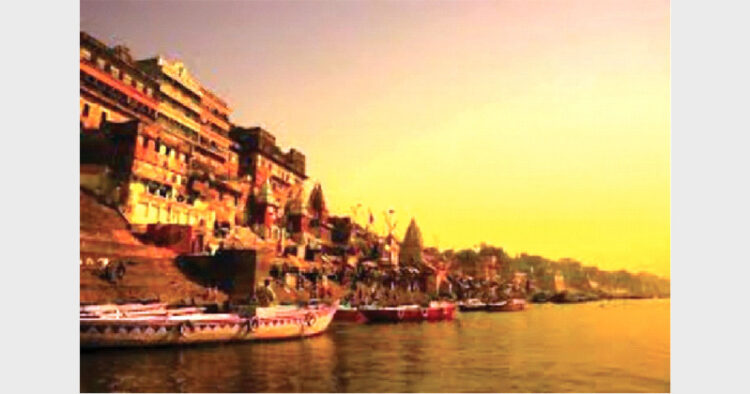Pilgrimage – teerth-yatra – the word has the connotation of self-purification – for the purification of body and soul. The Mahabharata and mythological Hindu scriptures have plenty of references about teerth-yatra and teerth-kshetra. Kashi, Prayag, Ganga, Godavari, Narmada and all revered rivers of Bharat and every inch of their banks, their context and surroundings are the teerth kshetras
-Dr Ujwala Chakradeo

Temple form, construction details and sculptures and shilp on the façade the shikhar, the deity within garbh griha, all are definitely very important factors when we talk about temples. Location and siting of the temple is also a very significant feature. Before starting construction, where should this construction take place is thoughtfully decided. Our ancestors have extensively deliberated on the issue. Temples are of various types, and for numerous Hindu Gods and Goddesses, each one is peculiar, and each one has its own specifications, for design detailing and that of location as well.There are certain places where the sense of arrival is strong and obvious. A gush of pleasure and the feeling of being a part of that place, environ is experienced by every visitor at some places. Welcoming places pleasing spaces, these are the obvious and natural locations for the temple to be erected.
Teerth is pious, teerth is devout, it is an essential element of water which is in every existence. In pooja ritual ‘teerth’ prasad is indispensable. In Rigveda, arrival streets, riverbanks, lakes, oceans and all small or large water bodies, hill slopes, hilltops, mountains, forests, every place where serene setting prevails is called as teerth kshetra and is the place where temple can be constructed. The meaning of the word ‘teerthkar’ from Jain dharma is ‘the one who is able to create ‘teerth’.
One can experience the teertha in the air of these places. Thousands of such teerthas are in Bharat. Teertha yatra taken by Parshuram and Samartha Ramdas Swami is not only iconic but has always inspired every Hindu with the learnings from such yatras.
Every Hindu aspires to take char dham yatra at least once in his/her lifetime. Badrinath in Himalayas in the north, Dwarka in the west, Jagannath Puri in the east and Rameshwaram in the south. 12 Jyotirlinga, shakti pith, 108 Devi shrines, Ashta Vinayaka, Ganapati kshetra, varkari sampradaya and their different kshetras, Nath sampradaya, Datta sampradaya, Mahanubhav sampradaya and their various places of worship are spread all over Bharat. This rich and delightful heritage of ours is something which we should be proud of.
A small point in this regard keeps bothering every time, why has our education system not yet taken the cognizance of such a rich treasure of ours?
(The columnist is Principal of SMM College of Architecture, Nagpur and specialises in Bharatiya Architectural Heritage)














Comments